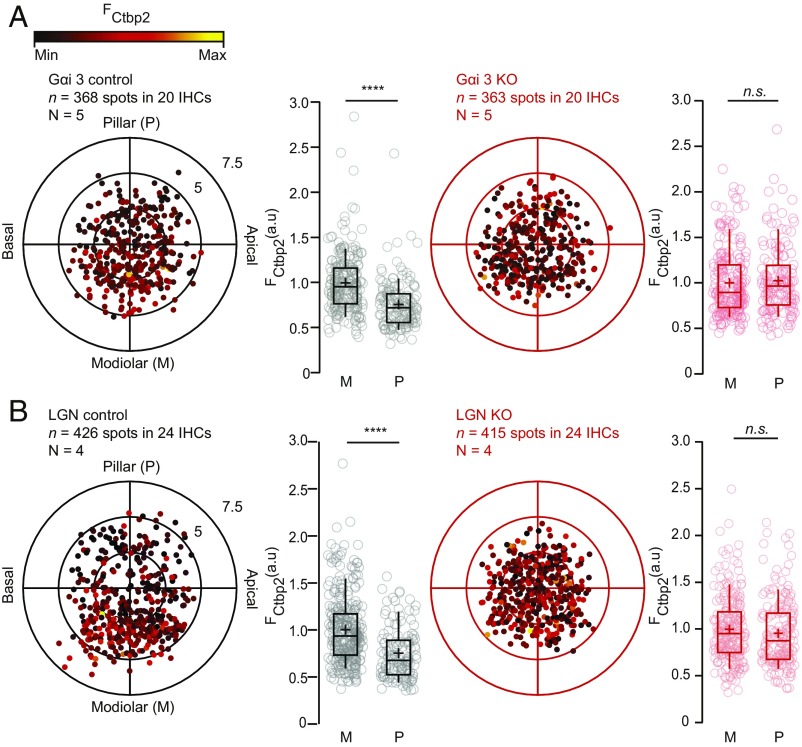Fig. 2.
Inactivating Gαi3 or LGN collapses the modiolar–pillar gradient for ribbon size. (A) The polar charts display locations and intensities of immunofluorescently labeled CtBP2 marking the ribbons. Modiolar and pillar refer to facing toward or away from the ganglion in the modiolus; apical and basal refer to the tonotopic axis of the organ of Corti. The fluorescence intensity of each CtBP2 signal point is reflected by its color, with warmer, yellow tones indicating higher intensity and cooler, darker tones indicating lower intensity. The spatial gradient for ribbon strength was lost upon Gαi3 inactivation (modiolar, n = 218 AZs vs. pillar, n = 145 AZs for 20 IHCs, N = 5, P < 0.00001, Mann–Whitney–Wilcoxon test), whereas it was preserved in the heterozygote littermate controls (modiolar, n = 225 AZs vs. pillar, n = 143 AZs in 20 IHCs, n = 5, P < 0.00001, Mann–Whitney–Wilcoxon test). Box plots show 10th, 25th, 50th, 75th, and 90th percentiles with individual data points overlaid; each radial circle is 2.5 µm, and means are shown as crosses as for B. (B) The inactivation of LGN collapsed the gradient of ribbon size [LGN KO, modiolar, n = 231 AZs vs. pillar, n = 184 AZs, P = 0.11 vs. LGN control (heterozygotes), n = 298 AZs vs. pillar, n = 128 AZs, P < 0.00001; 24 IHCs, n = 4, Mann–Whitney–Wilcoxon test for both conditions].

